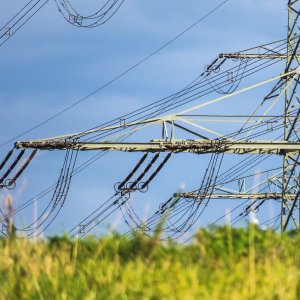New Political Scenario, New Opportunities

STORY INLINE POST
The cancellation of the fourth long-term electricity auction and the two HVDC transmission lines shifted the market’s dynamics. For some, that meant greater potential, says Hans Kohlsdorf, Founding Partner at Energy to Market. “The long-term electricity auctions were a good starting point and power generators used this opportunity to sell electricity to the government utility, CFE and final users were often overlooked. The fact that generators must now look for potential purchasers has motivated them to become more agile and to align with the private market’s potential.”
Through the long-term electricity auction scheme, 53 power generation projects located in 19 states were awarded, but Kohlsdorf believes there were some important discrepancies during the scheme’s development. One example is the concentration of generation projects in certain nodes across the country. In the third long-term electricity auction alone, 1,004MW of solar PV were awarded in Aguascalientes. “As the main energy purchaser was CFE, the industry did not bother thinking about how to link the location of a project with the consumption points. Now, we are observing price collapses in states like Aguascalientes and Sonora because of a surplus in generation,” he says. This opens very interesting investment opportunities for industrial customers with high energy needs.
Regarding the transmission segment, Kohlsdorf also has a positive view of the cancellation of the Ixtepec–Yautepec and the Baja California - Sonora transmission lines. The projects, representing a potential investment of MX$42.3 billion, were set to relieve potential future excess wind capacity at the Isthmus of Tehuantepec to deliver it to central Mexico and to connect Baja California to the national grid. “When experiencing energy generation surpluses and low electricity prices in places like Sonora or Baja California, then public policy should try to attract industrial companies with high energy needs that can take advantage of availability of low energy prices, rather than interconnecting those areas” Kohlsdorf says. The wind energy potential of the Isthmus should be used to deliver electricity to the South East, especially to the Yucatán Peninsula that today faces very high electricity prices.
If the new administration is to foster the development of the southeastern region of the country, Kohlsdorf believes it should start looking at energy as a catalyst. “Resources like wind energy and hydropower are available in the region. Instead of redirecting electricity from the south to the center of the country, industrial centers could be diversified,” he says. In addition, other regions with strong demand would benefit from a revamped infrastructure strategy. In the 2Q19, for example, two blackouts hit Yucatan Peninsula. “Yucatan lacks sufficient energy generation, hence a better strategy for transmission infrastructure could address this problem,” he adds.
Distributed generation should become the industry’s next focus. According to Kohlsdorf, the days of large utility-scale projects located in isolated regions will soon be gone. “Generation is moving closer to consumption. This is a megatrend at a global level and the latest technological innovations are making it possible,” he says, adding that “distributed generation will distress the congestion currently present in transmission lines, and if this is replicated, the whole system will become more stable”.
With all these variables in the development of every power generation project, both off-takers and power producers need to best seize available market alternatives. “We accompany power generators throughout the selection process to decide where it is best to locate a project. In this sense, we also seek energy sources that could be deployed in a specific environment.” For example, as Queretaro is a region with a high number of greenhouses and good natural gas availability, cogeneration facilities make a lot of sense. “It is important to reach common agreements with players that add value and complement the options that generators have in selling electricity and capacity to the market,” he adds.
From the end-user side, the company seeks that energy generation cope with its clients’ consumption curves. “We help companies to increase operational efficiency by recognizing the signals from the market,” says Kohlsdorf. “Within our work, we help consumers understand the opportunities to seize technological trends because efficient operational practices can deliver up to 35 percent savings.”
As distributed generation takes over the industry, E2M wants to become the No. 1 platform managing these transactions. “By the end of 2020, our goal is to become the main operator managing distributed generation facilities. This generation does not have to be behind the meter, a growing number of projects will be moving closer to high consumption areas. Some of these projects will be fairly large utility scale projects.” E2M helps generators find promising locations that due to their privileged access to off-takers are easier to finance.
“We also support smaller players that are generating in situ.” Small players are encountering hurdles in accounting for CELs and placing excess capacity given their size and Kohlsdorf says E2M’s platform could be instrumental in optimizing their profitability.
The common model of private energy supply that involves placing a large block of energy with a large consumer is changing. “Every market in the country has a manufacturer and a consumer. A service provider and a user,” Kohlsdorf says. “These counterparts can decouple from each other and the model will always include generation and consumption optimized through the market. The possible synergies go way beyond saving some extra pesos through the energy price.” In this sense, he believes industrial and commercial customers are adopting new technologies at a fast pace and the energy sector is reconsidering its path because there are many opportunities waiting to be tapped.

























